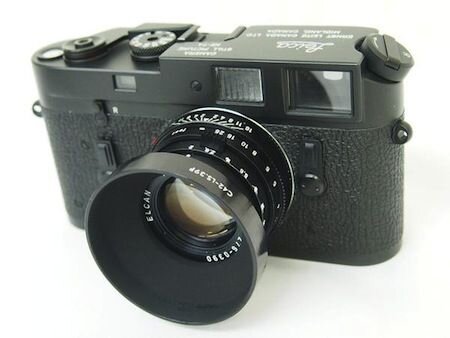Leica Betriebsk Cameras
Images courtesy of James Lager
Made for internal use only, some have wound up on the open market
Like most camera manufacturers, Leica produced a limited number of cameras destined for internal use, for everything from field testing lenses, accessories, and features, to documenting factory events, to giving engineers that hands-on shooting experience so essential to evaluating and improving the breed. But unlike other companies, Leica dutifully marked these cameras “Betriebsk” and engraved them with special 3 or 4-digit serial numbers that weren’t in the regular production sequence to indicate they were not to be sold. “Betriebs” means “works” or “factory” and “Betribsk” is thus an abbreviation for “Betriebskamera” or “works camera.” Typically, these markings were engraved on the top or rear surface of the top plate, and also under the top plate for good measure. The vast majority of vintage Betriebsk cameras are late screw-mount and M-series Leicas, including the IIIc, IIIf, IIf, M3, M2, M4, and M7.
According to Leica historian James Lager, screw-mount “Barnack” Leicas bearing Betriebsk inscriptions all date from the immediate post-WWII era. “I’ve never seen a pre-war Leica with Betriebsk markings in over 40 years of research,” he notes, “though that doesn’t prove conclusively that none exist. Also, don’t be thrown off by the DRP logo on many of these cameras. During the late ‘40s up to the early ‘50s Leitz was using any existing parts on hand in order to meet the tremendous pent-up demand for new Leicas, and that included pre-war camera top plates.”
Leica M3 Leitz-Eiguntum courtesy www.photographica-auctionen.de copyright 2008
Leica IIIc converted to IIIf Betriebsk No. 145, courtesy James Lager
Leica M3 Leitz-Eiguntum courtesy www.photographica-auctionen.de copyright 2008
Leica CL box indicating labeled demo product, courtesty of camera
Leica CL box indicating labeled demo product, courtesty of camera
Leica CL box indicating labeled demo product, courtesty of camera
Black Leica IIIf conversion Betriebsk No 030, courtesy James Lager
For the record, DRP stands for Deutshes Reichspatent (German Empire Patent), but this has nothing whatever to do with the “Third Reich” and was used for many years before the Nazis came to power. Later Leica III- and all M-series Betriebsk models bear the DBP logo that stands for Deutsches Bundespatent (Federal German Patent), the current German Federal Republic that was formed after World War II.
How did these “not for sale” factory Leicas manage to wind up on the open market, where they typically fetch extravagant prices due to their extreme rarity? While some have speculated that they were, shall we say “misappropriated,” there are many less nefarious explanations. Theoretically these cameras should have been destroyed when they were no longer used for their intended purposes, but one can understand the reticence, especially of a Leitz employee, to literally cast a beautiful, functional Leica on the scrapheap.
Here are a few likely explanations: 1. The Leitz employee who signed it out simply never returned it, nobody followed up, and it was eventually sold by his widow. 2. It was informally sold or given to a Leica engineer, sales exec, etc. with the understanding it wouldn’t be sold. 3. It was used for a specific project and wasn’t returned to the pool when the project was completed. Obviously, the possibilities, including larceny, are endless, but in most cases, we shall never know for certain how they wound up being offered for sale. Also, while there are no precise figures on the number of Betriebsk camera produced, the number is likely to be in the hundreds, so these cameras are exceedingly rare.
By the mid to late ‘50s, Leitz found another way to mark its “not for sale” factory cameras—engraving the words Leitz-Eigentum (property of Leitz) on the back area of the top plate. The M3 shown, courtesy of Photographic Auction Germany, is probably even rarer than the Betriebsk version, so the asking price must have been astronomical.
Finally, there’s yet another Betriebsk camera that takes the concept to another, dare we say it? more “commercial” level? This handsome black digital Leica CL is nicely engraved “Betriebsk.” In white letters, has a regular serial number on the bottom, and came in a plain box labeled “demo product.” Indeed, it’s a “Leica CL Mirrorless Digital “Betriebsk” Edition Camera” that was produced in a limited edition of 180 units and was clearly intended to be sold—mostly to collectors looking for something rare and special to shoot with and to adorn their gleaming Leica showcases. P.S. One of these beauties sold on a leading European auction site for $2,319.00 plus $80 shipping and was listed as (what else?) a “camera especially prepared for factory use.”

